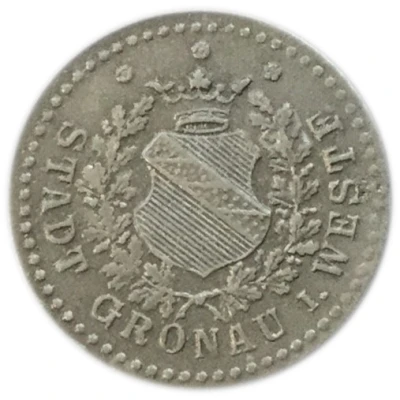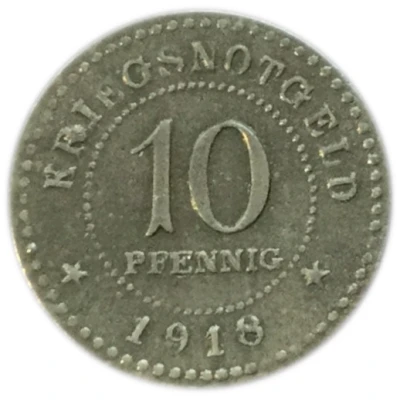


© Zelo
10 Pfennigs - Gronau
1918 year| Zinc | - | 20 mm |
| Issuer | City of Gronau (Westphalia) (Prussian province of Westphalia) |
|---|---|
| Type | Standard circulation coin |
| Year | 1918 |
| Value | 10 Pfennigs (10 Pfennige) (0.10) |
| Currency | Mark (1914-1924) |
| Composition | Zinc |
| Diameter | 20 mm |
| Thickness | 1 mm |
| Shape | Round |
| Technique | Milled |
| Orientation | Medal alignment ↑↑ |
| Demonetized | Yes |
| Updated | 2024-10-04 |
| Numista | N#189386 |
|---|---|
| Rarity index | 89% |
Reverse
Denomination encircled by beads.
Script: Latin
Lettering:
KRIEGSNOTGELD
10
PFENNIG
* 1918 *
Edge
Plain
Comment
Issuing authority: [Stadt, Westfalen]Interesting fact
One interesting fact about the 10 Pfennigs - Gronau 1918 coin is that it was issued during a time of economic turmoil in Germany, known as the "Inflationary Period" (1914-1923), when the value of the German mark dropped significantly due to the country's involvement in World War I and the subsequent economic crisis. As a result, many different types of coins were issued during this time, including the 10 Pfennigs - Gronau 1918, which was made of zinc, a cheaper metal than the traditional copper or silver used in coin production. This coin is a unique example of how the economic conditions of a country can impact the production of currency.
Price
| Date | Mintage | VG | F | VF | XF | AU | UNC |
|---|---|---|---|---|---|---|---|
| 1918 | 20000 | - | - | - | - | - | - |
Values in the table are based on evaluations by sales realized on Internet platforms. They serve as an indication only for 10 Pfennigs - Gronau 1918 coin.